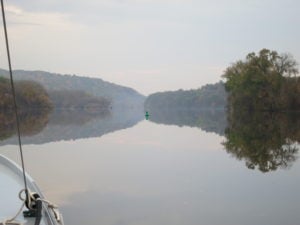Enterococcus (“Entero”) is a fecal indicating bacterium that lives in the intestines of humans and other warm-blooded animals.
Mohawk River
Citizen Testing Sites
Water Quality Conditions by Location
| Recent Samples | Historical Statistics | ||||||
|---|---|---|---|---|---|---|---|
| Site Name (Watershed) | Sample Date |
[i]
Entero Count
|
[i]
4 Days Total Rain (in)
4 Days Total Rain (in)The combined rainfall for the day of sampling, prior day, two days prior and three days prior. More than 1/4 inch is considered a “wet weather sample.” |
[i]
Number of Samples
|
[i]
Geometric Mean Geometric MeanA measure of central tendency (a weighted average) used by NYS DEC and the US EPA to assess water quality. The geometric mean is defined as the nth root (where n is the number of samples) of the product of the Enterococcus measurements. A geometric mean over 30 fails the EPA criteria for safe primary contact. |
[i]
Maximum
MaximumThe highest Enterococcus count we have recorded at this site (“>” indicates an unknown number greater than this number and reflects the upper limit of our scoring ability for this sample). |
[i]
Minimum
MinimumThe lowest Enterococcus count we have recorded at this site (“<” indicates an unknown number less than this number and reflects the lower limit of our scoring ability for this sample). |
Individual Entero Counts by Site
Note: multiple counts of the same value will overlap and appear as one dot.
Water Quality*
*Single sample thresholds;
Enterococcus count per 100mL
Prior Four Day Rainfall
(in inches)
Geometric Mean*
*Weighted average of multiple
samples; Enterococcus count
per 100mL
Enterococcus is an EPA-approved fecal contamination indicator.
Samples taken by citizen scientists and processed at SUNY Cobleskill, using methods and study designs that are consistent with Riverkeeper’s Hudson River and Community Science programs.
WATERSHED DESCRIPTION
At 140 miles long, the Mohawk River is the Hudson River’s largest tributary. It flows through the Mohawk Valley, which sits north of the Catskills and south of the Adirondacks. The Mohawk watershed covers all or part of 14 counties, and it makes up approximately one quarter of the Hudson River watershed by area. The Mohawk joins the Hudson at Cohoes.

Mohawk River in October, photo J. Lipscomb/Riverkeeper
The Mohawk’s largest tributaries are Schoharie Creek, West Canada Creek, and East Canada Creek. Water from the upper Schoharie Creek watershed is diverted into the New York City drinking water supply, via the Shandaken Tunnel, which connects the Schoharie Reservoir to the Esopus Creek and Ashokan Reservoir.
The Mohawk River channel is intertwined with the Erie Canal, which was built in the early nineteenth century to connect New York City with the Great Lakes. Portions of the Mohawk channel flow parallel to the Erie Canal, and some areas the canal and river channel are combined. Later, railroads and highways were also built along this transportation corridor. Today, the Erie Canal is primarily used for recreation.
In 2010, the NYS Department of Environmental Conservation developed an action agenda for the Mohawk watershed, and this was followed in 2015 by a watershed management plan, developed by the Mohawk River Watershed Coalition.
Read Riverkeeper’s 2021 monitoring report for the Mohawk River.
SAMPLING PARTNERS
Riverkeeper partners with SUNY Cobleskill to sample the Mohawk River. We began sampling in 2015, and the project area extends from Rome to the river’s mouth. Samples are collected by Riverkeeper staff and SUNY Cobleskill faculty and students from the Riverkeeper patrol boat or from land. Samples are processed on the Riverkeeper vessel and at SUNY Cobleskill.
